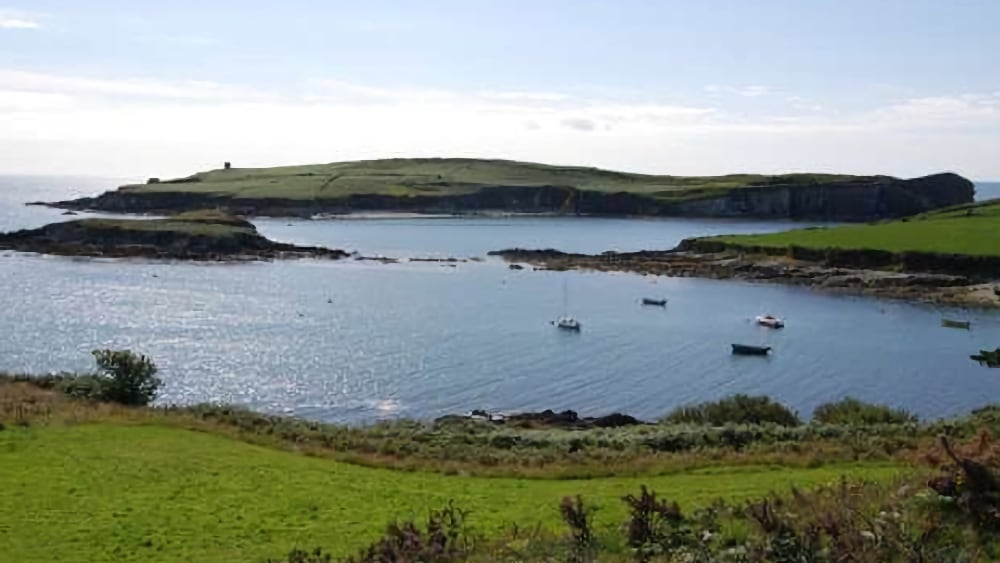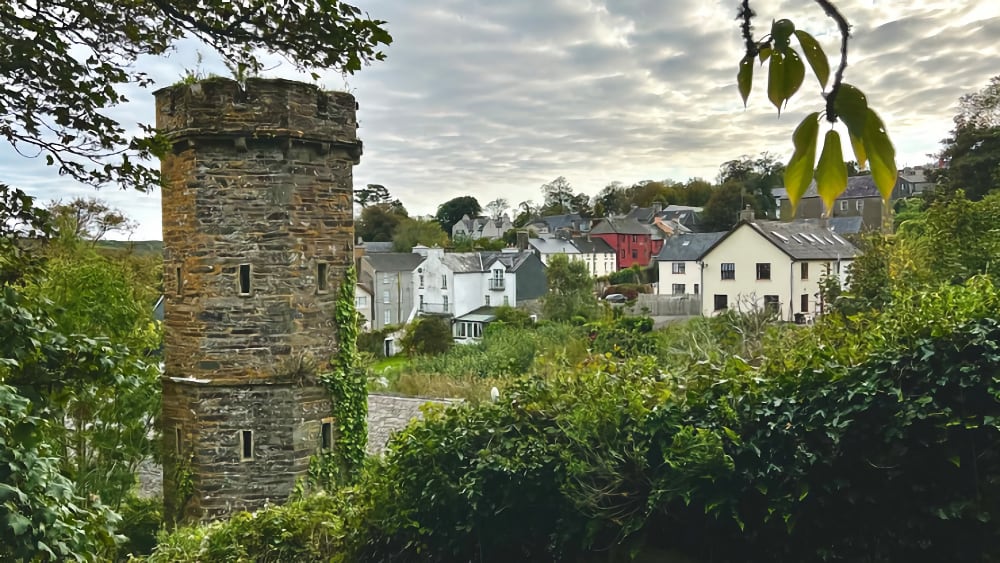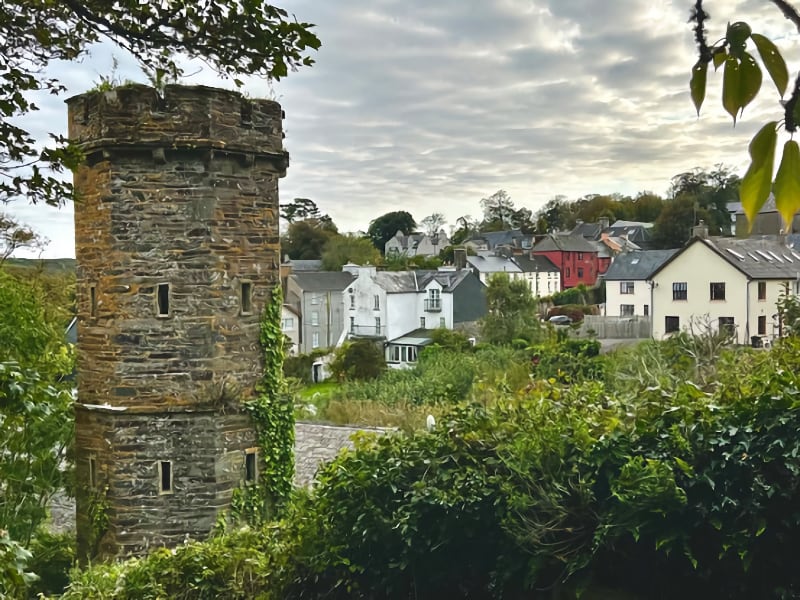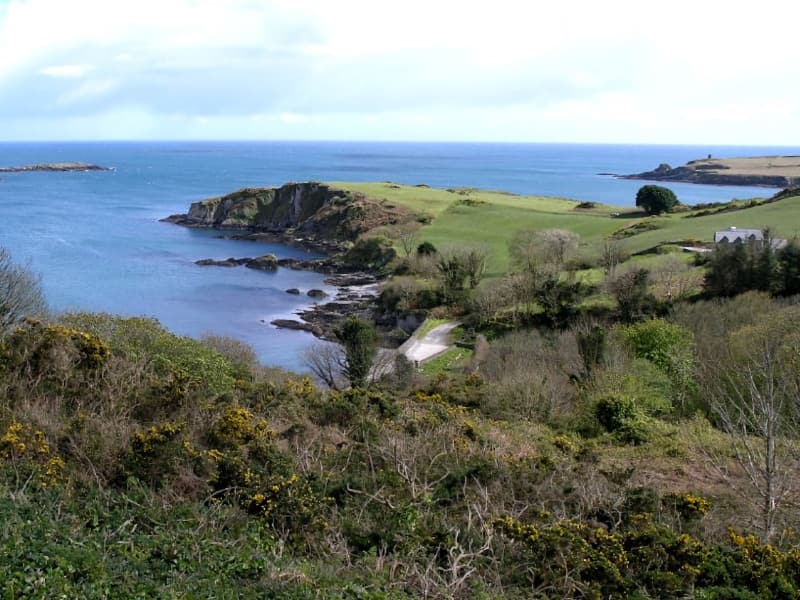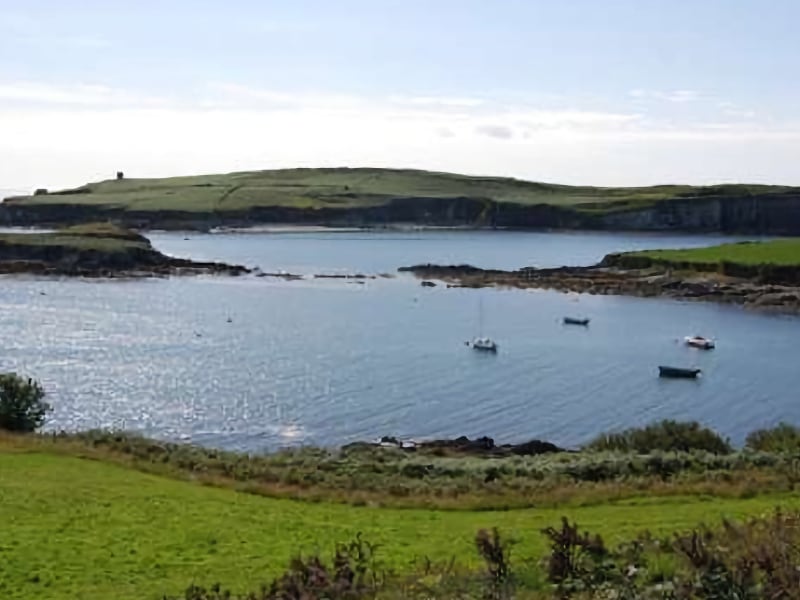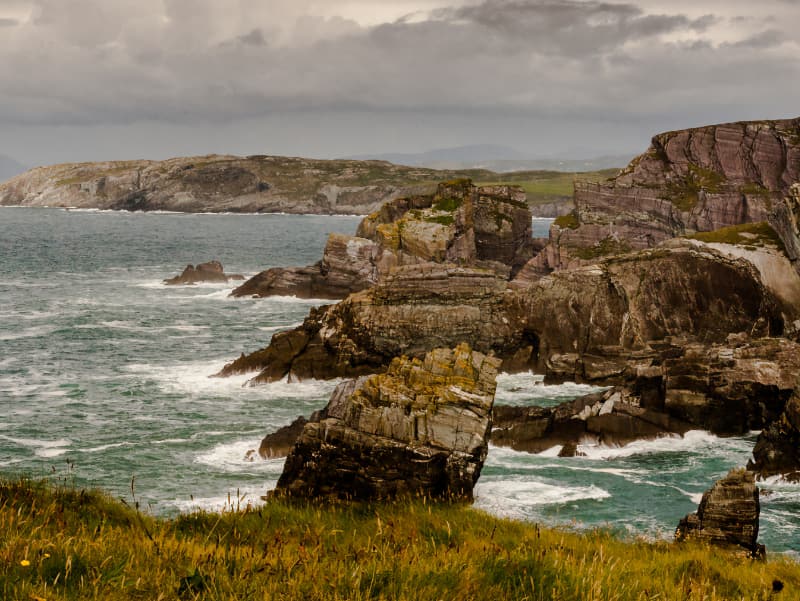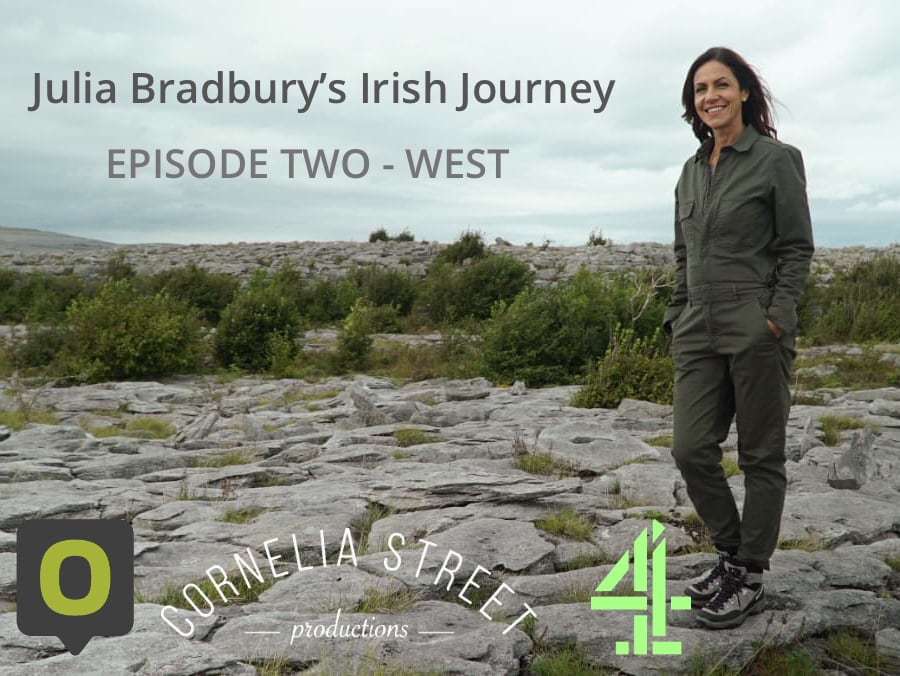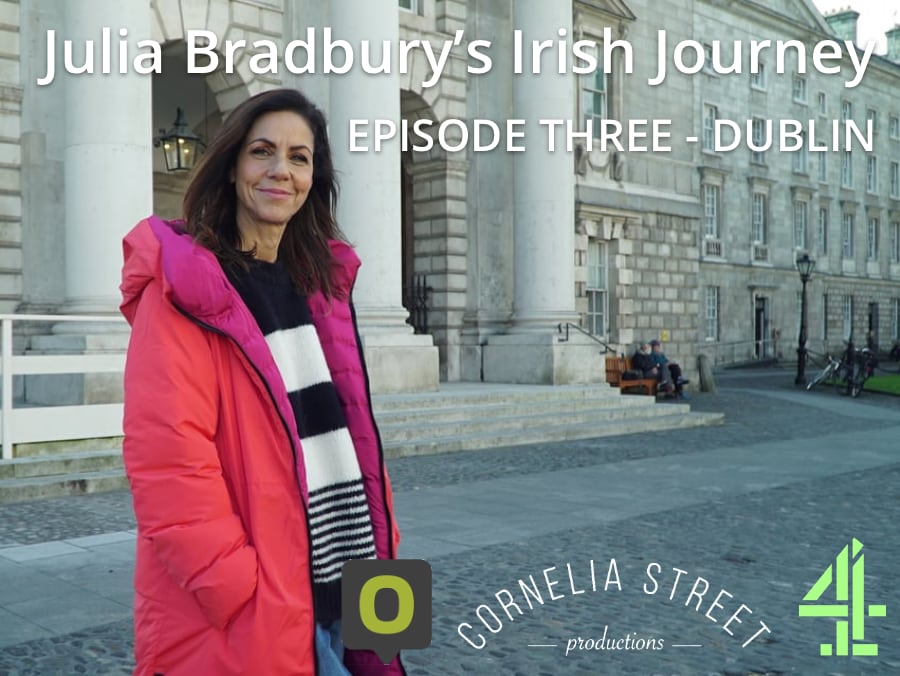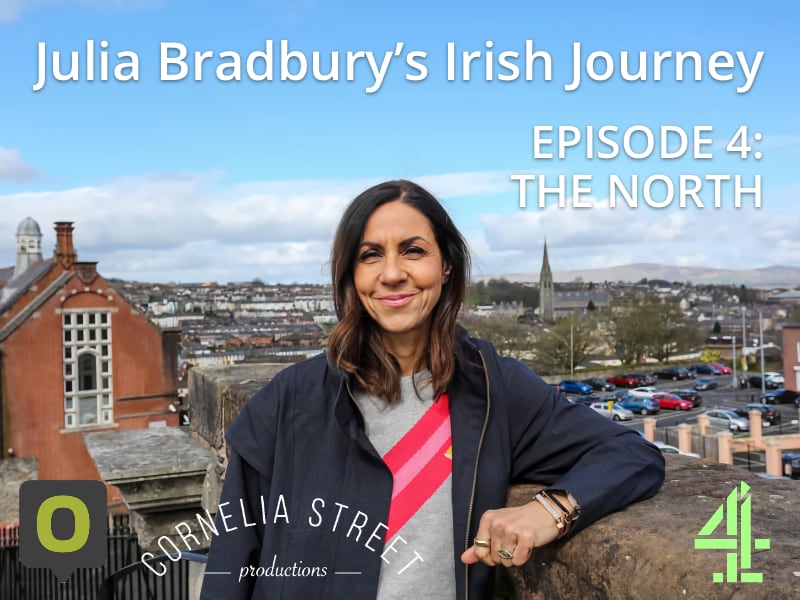Southern Ireland, it’s a treat for the soul, part of the much-loved Emerald Isle! This may be just a small island in the Atlantic Ocean, but it has captured the hearts and imaginations of people from around the world. It truly is an enchanting country – and was the birthplace of our very own Julia. The Channel 4 Julia’s series, Julia Bradbury’s Irish Journey, takes us on a tour around the Emerald Isle, and we start in the south of Ireland.
Julia on location filming Julia Bradbury’s Irish journey …
It may be a long way to Tipperary, but that’s where we’re starting from in the first episode, which focuses on southern Ireland. Not only is it the largest inland county of Ireland, but also boasts some of the best agricultural land in the country with its lush green fields. Tipperary forms part of the province of Muster – what was once the early Irish Kingdom. And our journey here starts with a place steeped in history.
The small town of Cashel and the rather dramatic Rock of Cashel. According to local legend, the rock came from the Devils Bit (20 miles away). St Patrick banished Satan from a cave, resulting in the rock landing where it now sits. It was the traditional seat of the Kings of Munster for several centuries prior to the Norman Invasion in the late 12th century.
Sitting atop of the rock are the largest group of medieval buildings in Europe – including the 12th century round tower, High Cross and Romanesque Chapel, 13th century Gothic cathedral, 15th century Castle and the restored Hall of the Vicars Choral. The site is open to the public to visit all year round (with the exception of 24-26th December) – and is very popular during the summer months; southern Ireland is exceptional in its architectural history.
The town of Cashel itself is a quaint little town filled with cafes, craft shops and curiosities. One of the most popular is Rossa Pottery. Established in 1962, they throw hand made pots, mugs, vases, plates and more – all with one of the unique glazes – suitable for everyday use.
Heading south from here, we head into the largest county in Ireland, County Cork. We’re headed for the coast, to the small town of Kinsale that has become a big name as the gourmet capital of Ireland – in part thanks to the high quality of produce coming from the land and sea that surrounds the town. It was back in the 1970’s that the hotels of the town got together to create a food circle to drive up the standard of cooking to match the quality of the locally produced ingredients that were on offer. Chefs from around the world, including the late Keith Floyd came in to drive this forward on the understanding that they were stronger united, as one.
Visiting Ireland is a true gastronomic delight! This town has much to offer the foodie – and who better to show you than Suzanne Burns of Kinsale Food Tours who also showed Julia around town. Julia’s tour started with freshly landed fish and seafood at Max’s Restaurant (named after a much beloved dog!). Second course was a selection of local cheeses (there are over 200 farmhouse cheeses from 86 cheese makers in Ireland) from the Gourmet Pantry – the local award winning deli. The Tipperary Brie and the Cashel Blue are two local cheeses that come highly recommended by Julia! And for those of you with a sweet tooth – Koko of Kinsale produces artisan chocolates that not only look amazing – they taste incredible too!
After all that food you’ll perhaps, like Julia, want to walk it off. Heading deeper into West Cork, Julia headed off to Castlehaven Bay, one of the many craggy inlets along the shoreline. In days gone by this was an area known for pirates and smuggling and in 1609 this was the location of a major naval battle. Now you can explore the bay in a far more sedate way – on a kayak with 4 times British Kayaking champion Jim Kennedy and his wife Maria. The long bays of this part of Ireland are perfect for kayaking as it is sheltered. A kayak with Jim helps you to be mindful and be present, to steal back a moment of time and connect with the nature that surrounds you in this beautiful place. Their company, Atlantic Sea Kayaking, was the first to offer such experiences in Ireland.
If you’ve still space after the gastric delights of Kinsale, you can join Maria for a seaweed foraging adventure (only take the end third of the seaweed from the tip to keep it sustainable!). Full of goodness – you’ll be amazing at just how many dishes you can use the seaweed in! You can taste the goodness, crunching into nature!
Whilst this part of Ireland may be known for amazing food now, that’s not always been the case. West Cork and the town of Skibbereen, the unofficial capital of West Cork. The Potato Famine, or Great Hunger of the 1840s, were felt here more than anywhere else. People would literally crawl down the hillsides, down to the town to try and get any food that they could.
At the time the potato was the staple of most people here, with the average Irishman eating 6.4kg a day. When successive blights devastated potato crops the outcome was widespread starvation. Around 1 million Irish people died during this time, 1 in 3 people in Skibbereen died. Another 1.5million emigrated to seek work and food elsewhere in the world. The story of this time is told in the Heritage Centre in the town.
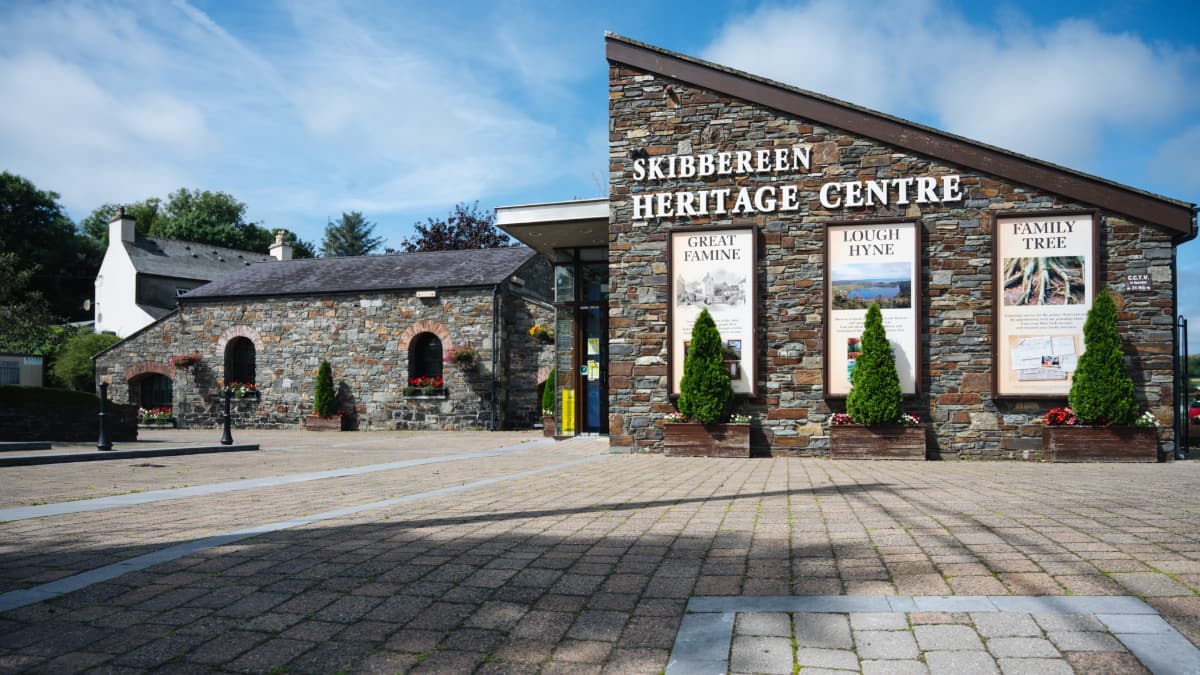
We end our whistle stop tour of southern Ireland at the most south westerly, rocky peninsula of Mizen Head. On the way there we pass Barley Cove – described as being one of the most beautiful beaches in the country and it’s not hard to see why when you’re there.
Mizen Head is a truly spectacular place where you can more than fill your boots with fresh air. Just take a moment to listen to the call of the bird life and the waves crash on the rocks. Just out to sea from here is one of the main trans-Atlantic shipping routes. This would have been the first sight many had of Europe, or the last depending on the direction they were heading. Visiting Ireland was perilous, the lighthouse was vital for those ships – keeping them away from the craggy shoreline.
Standing, looking out, you get the feeling of being at the end of the world, or at least the end of a continent. It’s been an extraordinary journey through the South – where shall we head next?
JB’s Ireland Walks – Episode 1
Julia Bradbury’s Irish Journey …


